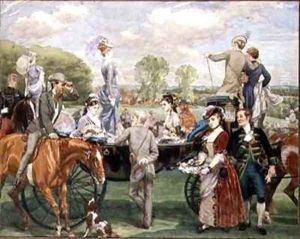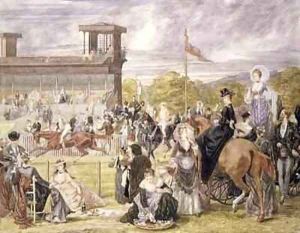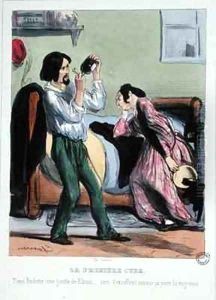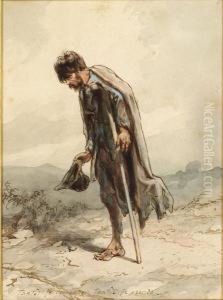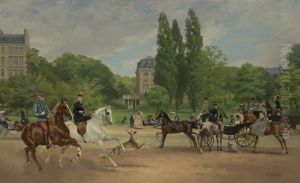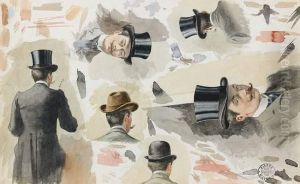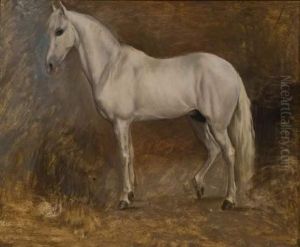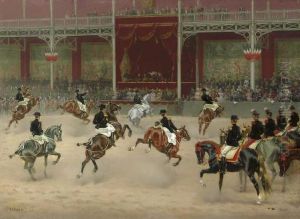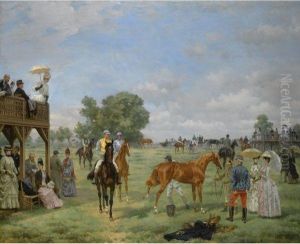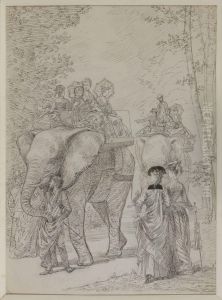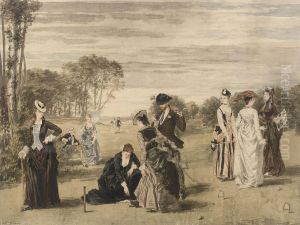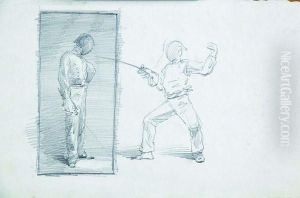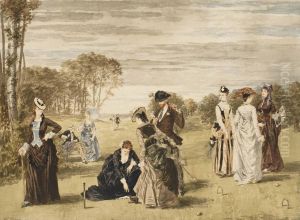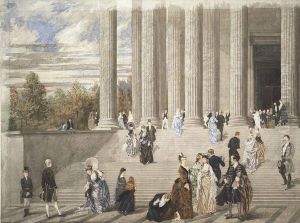Pierre Gavarni Paintings
Pierre Gavarni was the pseudonym of Sulpice Paul Chevalier, a French graphic artist, lithographer, and illustrator, born in Paris in 1804. Gavarni's early career was not initially focused on art; he trained as an engineer, which influenced his meticulous approach to his later work in art. Despite this technical background, Gavarni found his true calling in the arts, particularly in the burgeoning field of lithography, which was gaining popularity in France during the early 19th century.
Gavarni's work is characterized by its keen observation of Parisian society and the human condition, often infused with a sharp wit and a sense of satire. His illustrations and lithographs cover a broad range of subjects, from the frivolities of the Parisian upper classes to the hardships of the city's impoverished. Gavarni had a particular talent for capturing the nuances of facial expressions and body language, making his characters come alive on the page. His work provides a vivid snapshot of Parisian life during his lifetime, offering valuable insights into the social mores and conditions of the period.
Throughout the 1830s and 1840s, Gavarni's popularity soared as he contributed to various magazines and publications, including the famed 'Le Charivari', where he worked alongside Honoré Daumier, another giant of French lithography. Gavarni's contributions to 'Le Charivari' were instrumental in establishing the satirical lithograph as a significant form of social commentary in France. Beyond his satirical works, Gavarni also delved into more somber themes, reflecting on the darker aspects of human life and society. His series on the Parisian underworld and the lives of prostitutes are particularly poignant examples of his ability to blend empathy with critique.
In the later years of his career, Gavarni traveled extensively, including a significant period in London, where his work took on new dimensions, reflecting his observations of English society. These experiences abroad enriched his artistic repertoire and deepened his understanding of the human condition across different cultures. Despite his success, Gavarni struggled with personal issues, including financial difficulties and a troubled family life, which cast a shadow over his later years.
Pierre Gavarni passed away in 1866, leaving behind a rich legacy of work that continues to be celebrated for its artistic brilliance and its insightful commentary on 19th-century society. His contributions to the art of lithography and illustration have cemented his place as one of the most influential graphic artists of his time, remembered for his ability to capture the essence of human life with both humor and compassion.
